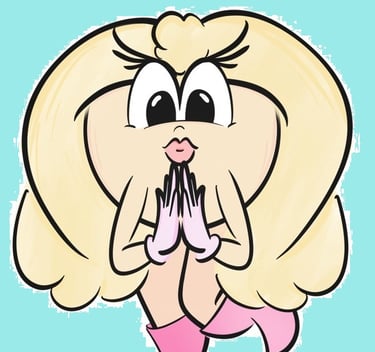
Welcome to the Tenchi Muyo Yo-Yo of Fate: From '90s Sensation to Forgotten Aberration, What Caused the Once-Iconic Franchise's Untimely Demise?
Tenchi Muyo, Where Are You? What Killed the Once-Unstoppable Anime
Over thirty years ago, the Tenchi Saga was an unstoppable force, a creative dynamo attracting an entire order of obsessive fans. Whether East or West, Asian or Caucasian, the fandom couldn't get enough of the would-be boy hero and his entourage of resplendent alien women. But the new millennium failed to further that Tenchi Century fervor. By 2010, the franchise had been all but abandoned...and by 2025, it'd been essentially disenfranchised, berated by even its once-loving fans. Now excised from memory and, by extension, removed from its proper place in history, those that still remember the eclectic show often wonder: WHAT THE HELL HAPPENED? How did a saga so recognized--so adored--somehow sink into the black drink of history? And, more pressing still: Will it ever revive for a glorious return?
Before Tenchi can be discussed, a quick aside must be made for video streaming--no other medium has proven so instrumental to the growth of the Western anime movement. Shows and films of a niche or obscure nature now became available everywhere, waiting to be consumed through that magical trough known as the streaming box. Indeed, everything came through that magical portal…both the good and the rot, the hot and the shlock. And this, of course, included that strange “Japanimation” stuff from the East.
Indeed, after years of fighting for hearts and dollars and space on store shelves, anime had finally achieved its long-sought universality. Big-eyed protagonists and planet-cracking ki blasts and thick-thighed high school girls squealing in revealing skirts were no longer considered so odd, so ridiculous, so borderline creepy. If anything, such cliches had become but the hallmarks of an art form now copied across the world.
But video streaming, by normalizing anime, also served to cheapen it. Trivialize it. Bury it.
Services like Amazon and Netflix are perpetual hamster feeders of new content, drip-feeding new shows and episodes as quickly as one might slurp a slushie or inhale a bag of chips. There is always a new series, always another Isekai, always another unrolling adventure or epic to absorb. And with so much to process—so much new content always rushing down the feeder—there’s little time to appreciate, let alone rewatch, the classics of the past.
Which means that the typical anime buff, despite his or her “expertise” in the pastime, probably hasn’t seen Project A-ko. Might recognize but never watched Astro Boy or Urusei Yatsura. And, incredibly, has no connection to a “little” series known as Tenchi Muyo.
Digital Streaming: Favoring the New, Burying the Old
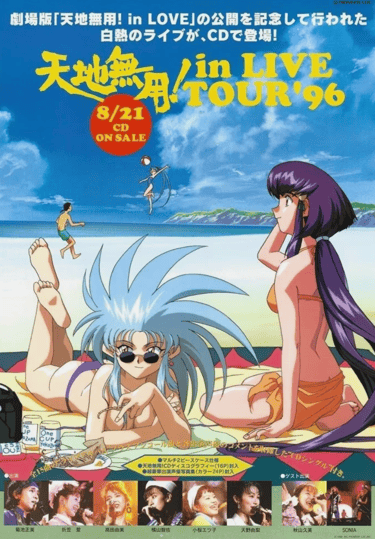





How big was Tenchi? In Japan, there were even live concerts in which the characters' voice actors performed for swaths of fawning fans. Amazing.
The Tenchi phenomenon spawned enough merchandise to fill a hundred shipyards (probably more). It also inspired a number of spin-off TV series including the Magical Project S pictured here, another popular property now all but forgotten.




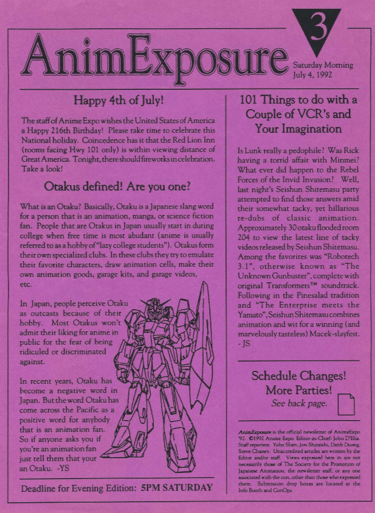

Anime fandom, at least of the American variety, hearkens back as early as the 1980s. In those days, attending the rare anime convention was one of the few ways of learning about, and maybe procuring, whatever new Japanimation was circulating overseas (but was otherwise unavailable to Western folks).
Dedicated video stores were another source for the obscure in those early, anime-less days. Suncoast was a very common, if expensive, stop for anime fans needing their next fix.
Tenchi Muyo: Too Big to Fail...And Yet it Did
Tenchi Muyo spans multiple series and continuities, mediums and timelines: Anime, manga, video games, audio dramas, musical tours, and endless merchandise…the franchise dominated the 1990s, becoming a constant fixture in Japanese popular culture. Until, as if stricken by a perverse version of the Mandela Effect, it suddenly wasn’t. More than losing the limelight, more than falling to second place…the series simply and inexplicably vanished from public consciousness.
Tenchi’s fate was no different in the West. Despite being a headliner for the entire anime art form—despite being among the few Japanese creations both recognized and beloved in an otherwise myopic, “American-made” landscape—“Tenchi Muyo fever” also dissipated faster than a cabbit chasing a carrot. More than a decline, it was almost a straight-line demise, a catatonic drop that still confounds years later. What could bring such a seminal show to such thankless ignominy? The reasons are a scattered shower of maybes and theories, ranging from simple franchise fatigue to the following gut of copycat shows that turned Tenchi’s many creative milestones into cliches and excessive tropes.
But the ultimate, and most tragic, reason lies with the franchise itself. Tenchi Muyo, despite its vast potential, never properly understood its own genius—what made it truly compelling. Enrapturing. Addicting. What made it, in a word, fun.
Tenchi Muyo! Ryo-Ohki was an anime breakthrough in the West, but its effect on Japanese audiences was equally profound. Indeed, more than just a silly farce about a boy surrounded and hounded by a thrall of unctuous girls, it was a space opera mixed with a fairy tail, a power fantasy contained within the frame of a young, incredulous boy—a wishful exercise instilled and distilled into a timeless galactic paradise. It was a slice-of-life dramedy. A sappy-happy sitcom. A show of mystery and spiritualism with just a smidge of political intrigue. It was Earth and Space, Foreign and Terrestrial, Male and Woman, Boy and Man…a show of arcane cosmologies and exotic characters and cosmic folly all crazy and alien yet somehow heartwarming and serene. Even comforting.
Tenchi Muyo was a show for both the boys and the girls, for men and women wanting some guffaws and eye-wiping awwws to join the explosions and climactic action. And, at least initially, the creators tread that balance will skillful aplomb, providing an eclectic tour-de-force that absolutely worked. So, what the heck went wrong?
The OVA’s sequels, maybe ironically. After six episodes of haunting villains and sexy vixens all juxtaposed against weird slice-of-life antics, the series would begin to falter. Get confused. Lose the proverbial Juraian forest for the surrounding, confounding trees. Although the next seven episodes still provided a collage of heartfelt tales and character studies, the signs of a fraying directorial vision were already creeping free. The tightly wound plot of the OVA’s initial six had dithered into a more episodic-style affair, with an emphasis on self-contained stories lacking the action, the intrigue, even the full romantic bite that had made the earliest installments such a captivating win. Rather, they doubled up on the narrative’s already confusing and cryptic lore, favoring the minutiae of its characters’ cloudy backstories than the sheer fun of before.
Yet, this was only 1995. Tenchi Muyo! Ryo-Ohki had debuted only three years earlier and was still at its peak in popularity. Despite being a tad diminished, the second OVA had maintained the fandom’s interest while the new TV series (what would be known as Tenchi Universe in the West) was only building that fervor further. All series creator Masaki Kajishima needed was a second follow-up that would course-correct the series back to the high-adventure sensibilities of those first six episodes.
But less than doing the sensible, Kajishima did the unthinkable; he didn’t release anything. At least, not immediately. For nearly a decade, fans waited and fans wondered and, eventually, the fans faded—abandoned by a Faith which, just a generation earlier, had enthralled an entire culture.
But such is the common fate of myth mixed with popular culture: No matter how powerful or potent, popular myth is an ephemeral creature. Easily copied and, thus, easily replaced, a television show is like a mansion built on sand. It will sway and wobble and eventually break if not constantly maintained. And for Tenchi Muyo…it never grew the true, everlasting roots needed to withstand an always changing market, an ever-fickle audience constantly craving the next obsession. New harems, space epics, action spectacles, and swashbuckling fantasies stuffed with their own history and lore rushed to consume Muyo’s vacant shore. As Kajishima dithered on the franchise’s direction, fan fervor abated, then evaporated, as the next tide of anime scribes rolled in. Like a god forgotten, Tenchi’s once indomitable cast of characters slowly seeped from the collective consciousness until barely remembered, barely there.
And then the third OVA finally arrived.
The Tenchi Muyo Paradox: The Show of Endless Potential that Somehow Ran Out of Ideas
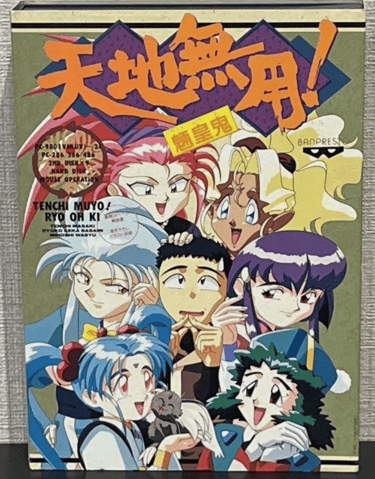

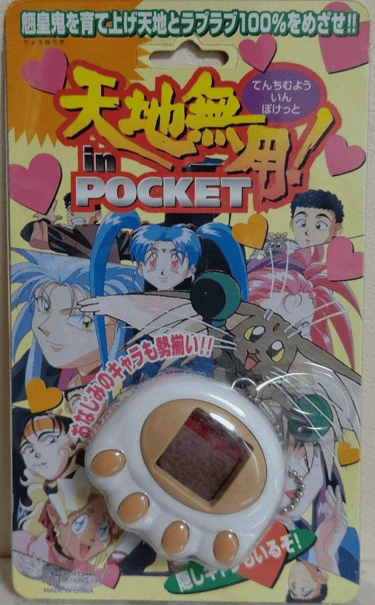

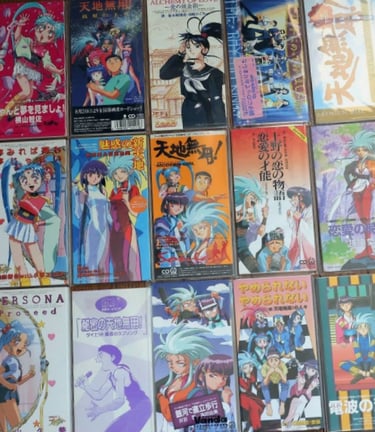



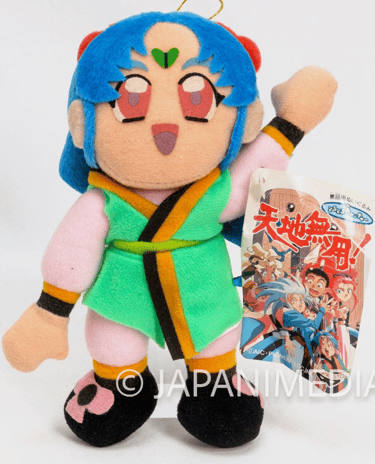

Plushies, computer software, drama CDs...even Tamagotchis. Anyone who denies Tenchi's cultural saturation in Japan is either a liar...or was simply not alive during those exciting, bygone times.
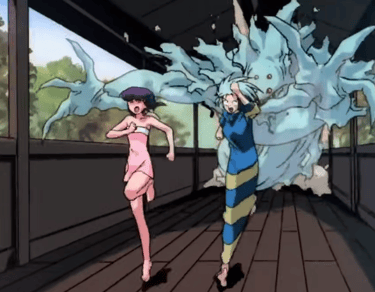

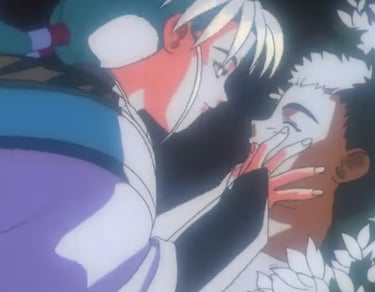

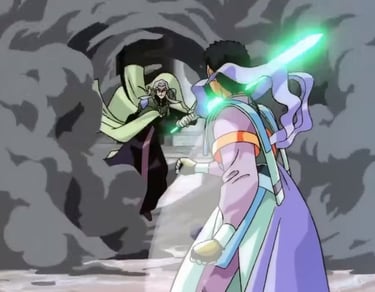



Slice-of-life, cosmic spiritualism, romantic comedy, sci-fi epic, cartoony farce...Tenchi Muyo! began at its best, providing fans with an excellent six-episode introduction (Tenchi Muyo! Ryo-ohki) to the growing Tenchi household and a universe of seemingly endless opportunity. A second batch of episodes then followed (OVA 2), adding texture to the already colorful cast. Problem is, the series went on an inexplicable hiatus after that; it'd be nine years before the saga would return...and when it did, were the fans still there?
Tenchi Muyo! Ryo-Ohki OVA 3 wasn’t the long-awaited second coming most expected...or needed. Rather, it was a seven-episode drektacular of inexplicable blandness, a madness of weird new characters and bewildering plotlines and low-stakes conflict that stole more than it gave. With unironic aplomb, it robbed series devotees of their once flirty, stirring, soulful gospel by swapping in an insipid, anti-epic instead. Beloved characters got swapped with lots of talk between new faces no one wanted to see, had never seen before. The dazzling battles that so defined the franchise were bumped for skirmishes of little sense or consequence. The show’s great humor now felt forced. Personalities seemed slightly different, slightly wrong. The artwork was flatter, odder, and less compelling. And peculiar plot choices--from portraying Tenchi's beloved mother as a weird eccentric to (once again) excluding Kiyone Makibi from the cast--abounded.
But the greatest sin was that the biggest question had been (indirectly) answered. Which girl would Tenchi choose? Why, all of them, naturally!
It was the ultimate cop-out--the ultimate betrayal--by a show founded on that very premise. Tenchi's future decision, and dilemma, was a significant component of the show's appeal. It was a promise mixed with a reckoning, a paradox of both a key and a lock. Only by choosing can Tenchi free himself from his homegrown penitentiary of jealous wardens; a wedding ring for one is the wolfsbane of banishment for all the others. And yet, his choice still comes at a cost, still drops its own dangerous cage. For a wife is for life...and whosoever shall be Tenchi's chosen chousin is never letting go. Will be there forever.
Tenchi's pickle was the true power that drove the show. But OVA 3 tilted the equation in an unforgivable way, dodging the conundrum by actually expanding Tenchi's platter of sugarplum goddesses. The "big" decision, in other words, had shifted from the boy to the belles. Tenchi wasn't choosing; they already had. The title character had become a bland bystander who just went along with whatever his entourage wanted. The gaggle was willing to share? Then, with a shrug and a shucks, he was willing to provide.
Lacking in action, humor, and mystery, the long-awaited continuation did the fans more than just a disservice...it cast a retroactive spell that besmirched the entire series, tarnishing its once-thundered wonder. You're only as good as your last show, an entertainer once quipped. And indeed, OVA 3's script sank the entire Tenchi ship, beaching its beautiful goddess of a saga like a bloated whale dumped on shore.
No Need for Tenchi, indeed.
The Prodigal Show Returns...but do Good Things Come to Those Who Wait?
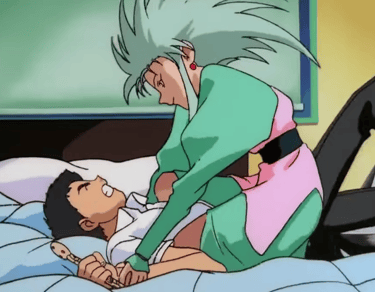

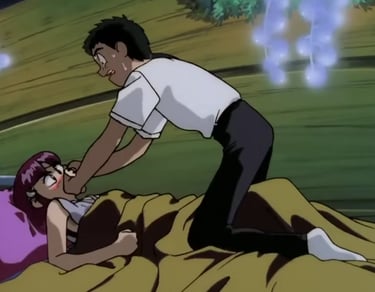


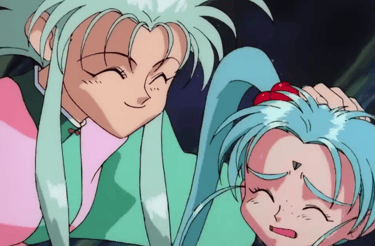


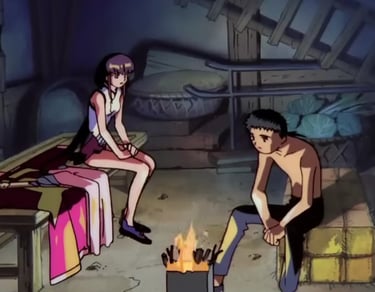


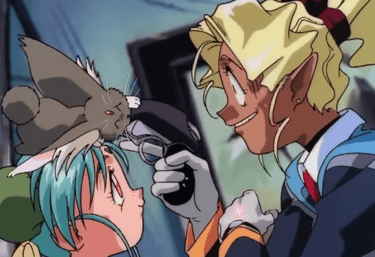
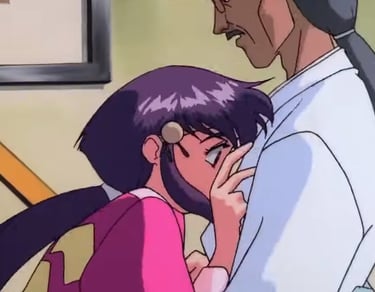

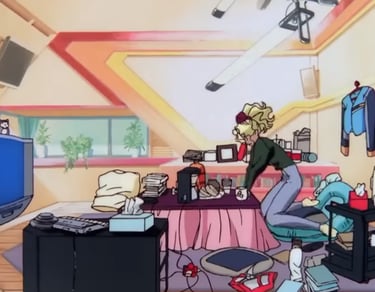

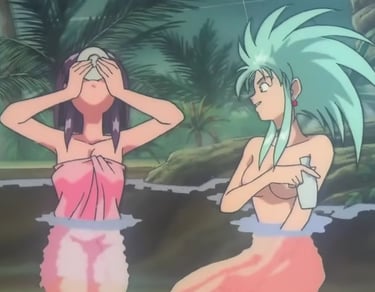

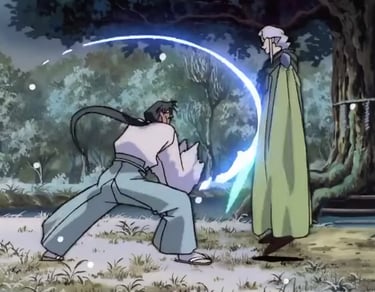

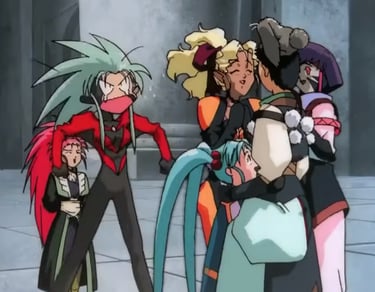

Blaming Team Kajishima for the all property's problems is certainly easy. Sure, like George Lucas, the master misunderstood what he had, didn’t quite grasp the true greatness of his creation--couldn't comprehend why so many had fallen in love with his pulpy masterpiece. This lack of clarity along with his own misguided pride meant a saga that soon circumvented what the fans really wanted for something more eccentric, more nuanced, a continuation more concerned with establishing a history and a framework than telling a personal, grounded, ongoing story. Kajishima’s vision is one that continues zooming out versus focusing in.
Want to follow Tenchi’s journey in becoming a man, in mastering his hidden power, in achieving his ultimate destiny? To Kajishima, Tenchi’s self-discovery is more about reacting than seeking, more about waiting around than journeying forth. It's not that Tenchi doesn't have depth, it's that he lacks ambition, a sense of urgency or responsibility greater that extends beyond his homestead resort. He isn't proactive, in other words, lacking the call to adventure or spiritual drive to leave his humble home behind.
But the franchise had a potential saving grace in the 1995 TV series. Tenchi Universe, as it was dubbed in the West, kept to the basics, focusing more on Tenchi’s domestic relationships for the season’s first half before dipping into some climactic, galactic shenanigans. If not quite excellent…it was good. And got increasingly better as it went, capping off in a satisfying finale that saw a selfish pirate’s sacrifice, a desperate princess rescued, and, in Tenchi, a true hero born. Trouble was, it only lasted 26 episodes.
Seems bizarre now, but in the 1990s, the idea of extending a popular series for countless seasons was not quite an industry standard. Though shows like Dragon Ball received multiple arcs before finally being retired, others would exist only as long as their stories required, then be pulled from the airwaves. And Tenchi Universe, with its chief antagonist defeated and boy hero victorious, ended without much reflection. The OVA was still there, anyway, so the thinking went.
Eventually, some executive must have realized the danger of letting the Tenchi franchise fade from the airwaves, for the TV series would eventually return in 1997. But rather than continue the popular Universe storyline, the decision was made to jump start yet another separate continuity--the outlandish Tenchi in Tokyo (aka Shin Tenchi Muyo!), a much zanier take on the Tenchi mythos. Like Kajishima’s later third OVA, viewers watched Tokyo with some level of incredulity, a vein throbbing at the sides of their collective heads. Although not without some merit, the show almost felt like a troll to those who wanted more Universe or something comparable to Ryo-Ohki’s original greatness.
Universe, or another series imbued with its sensibilities and spirit, could have powered the franchise for years to come. But as Tokyo concluded, fans were left disillusioned as they waited, and waited, for anything else Tenchi-related to come their way. But nothing did...until that disappointing OVA continuation in 2003. The fanbase, through sheer bewilderment, became effectively gaslit. Was Tenchi Muyo, indeed…ever good? Had the saga's greatness just been a product of their collective imaginations?
And, once fans began asking that, the franchise was as good as dead.

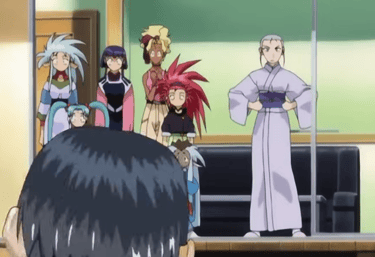
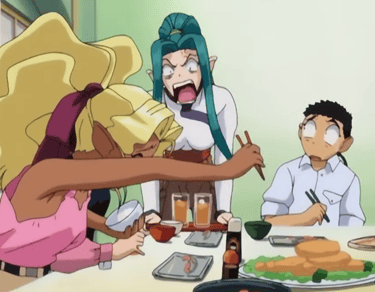

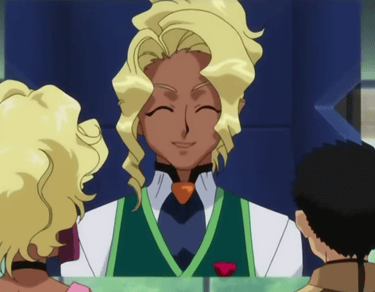


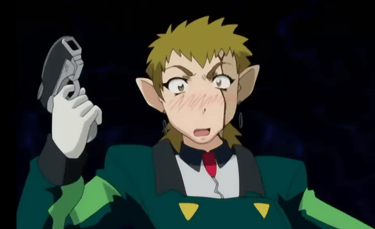
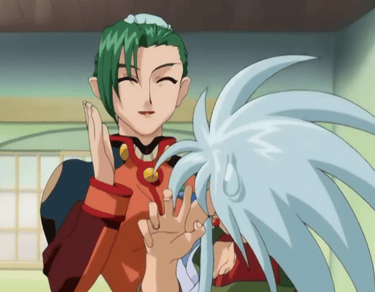

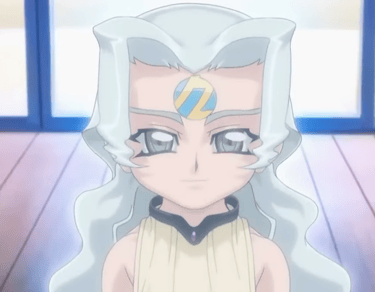


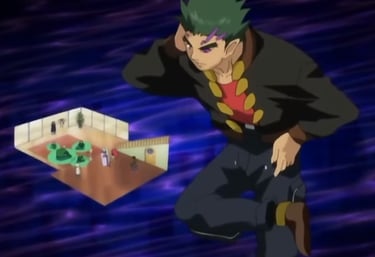
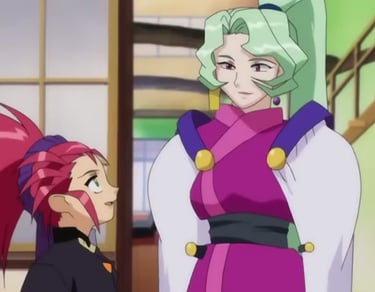

No Need for an Identity? - What is Tenchi Muyo, Really?
Tenchi Muyo! Ryo-Ohki's 3rd OVA was a long time in the coming. And when it finally surfaced, watchers found little of what made the earlier OVAs great. Poorer art, mediocre storytelling, and lots and lots of new characters no one really cared about. This is what fans had been waiting for since 1995?
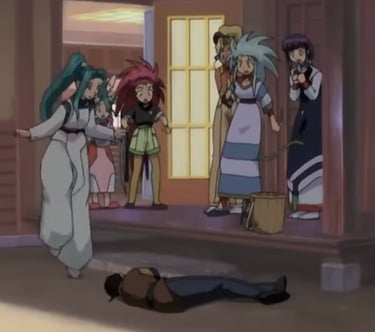

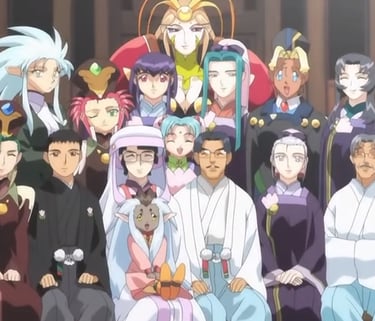

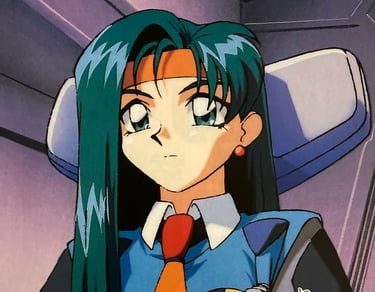

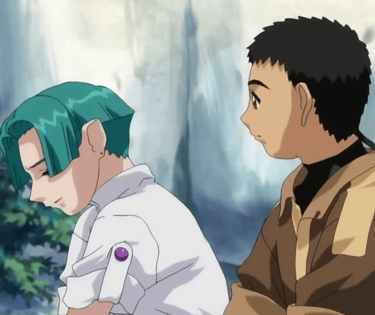

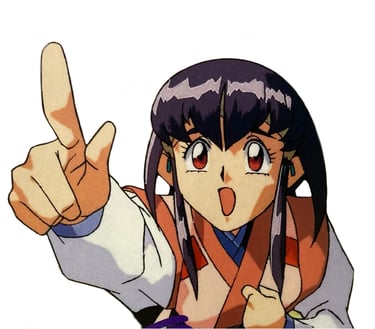

The third OVA--which only brings this particular series to 20 episodes!--bloats the proceedings by adding too many characters...including the inexplicable Noike. The OVA loves this character a lot, inflating her importance over the series' mainstays. She's no Kiyone Makibi!
*sigh*
What killed Tenchi? Suffocation. Smothering. Asphyxiation born of compounded affection.

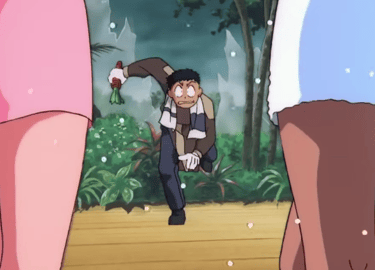


Fans often label Tenchi as being a bland, almost self-insert character--a cypher for the voyeuristic viewer. But early on, Tenchi had plenty of incredulous spunk. That blandness came later, along with his strange lack of self-agency. By comparison, Superman, with all his magnificent power, patrols Metropolis saving lives. Spider-Man does the same through the streets of New York, looking to assist those who need a hand. But Tenchi, unless forced, is happy to stay home and hoe his carrot fields. And whether right or wrong, it's kind of boring.


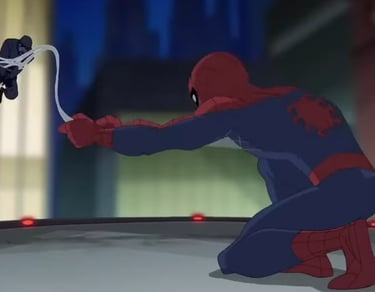

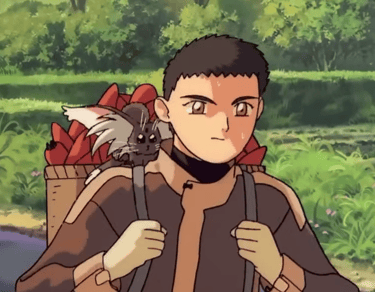




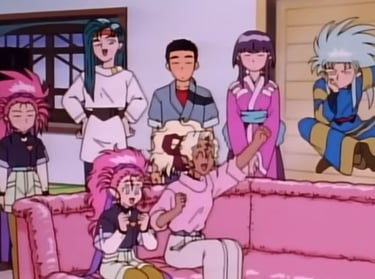

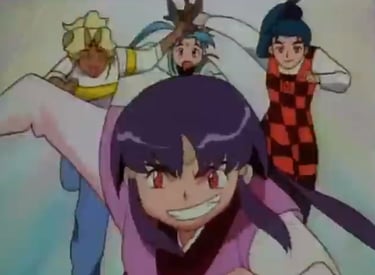
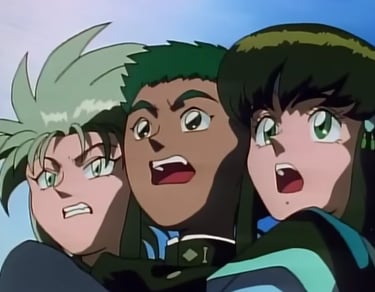

To capitalize on the growing Tenchi craze of the early '90s--and to keep it alive during the OVA's unreliable releases--two TV series were produced, Tenchi Universe (upper two pics) and Tenchi in Tokyo. Both played with the Tenchi formula with rather different results, and both represented the franchise's core crisis. What is Tenchi Muyo? Is it funny or serious, a chick flick or a shonen fantasy? The three theatrical films, which were far more heavy-handed in tone, confused the matter even further.
The George Lucas Effect - When the Gods Lose Touch With Their Creation
Woe to those who go alone. In Tenchi Muyo! Ryo-Ohki’s earliest episodes, Kajishima’s creative vision was counterbalanced by a team of collaborators who kept the story exciting, tantalizing, and most importantly…accessible. For all his genius, Kajishima is a lore-builder more than a storyteller, a chronicler more than a playwright. He loves minutiae and cryptic mythologies and confusing family trees that scroll for pages (and ages).
But tell a compelling caper? Choreograph an elaborate fight scene or orchestrate an intense family drama or juggle the odd-couple personalities of a household ballooning into a commune? Ryo-Ohki not only benefitted from having multiple contributors, it was likely saved by them—redeemed by both Hiroki Hayashi’s directorial acumen and writer Naoko Hasegawa’s astute grasp of female psychology and group dynamics. By OVA 2, however, both individuals (and many of their cohorts) had left for other ventures, leaving the property at the mercy of shakier hands.
And different teams mean different dreams, so another saying goes.
By OVA 3, the saga’s original aim, tone, feel, pace—everything—had been lost or replaced. Essentially, it’d become the victim of the George Lucas Effect, that phenomenon in which the fans grow to understand the property better than its very creator. For Lucas, his out-of-touch sensibilities were exposed with his inexplicable Star Wars Episodes 1 and 2, movies that forgot their predecessors’ emphasis on great characters and plotting. Kajishima suffered a similar disgrace in his OVA 3; with no one to course-correct or otherwise criticize the master’s direction, he made what he wanted at the expense of the fandom.
Yes, Tenchi Muyo, once so great and celebrated, never truly recovered. Never found a new audience, and worse, never properly realigned with the old. Neither OVA 3, 4, or 5 succeeded in reminding audiences why they had once found the franchise so enrapturing.
More than forgotten or left behind, the series had been discredited. Debunked. And like a failing marriage, a divorce was imminent.
For all its obstacles, Tenchi Muyo’s truest antagonist was its era; as already covered, TV shows of the period were rarely designed with longevity in mind. Both Tenchi Muyo TV shows told their respective stories within a single season, then ended. And apparently, no one at AIC, the founding studio of the property, saw the wisdom, or had the imagination, to extend Tenchi’s adventures into a greater range of episodes.
Years later, the chance of a Tenchi comeback seems slim, even grim. With the OVA lost to the netherworlds of niche and the old TV shows long buried or sullied, anything short of a full reboot is probably doomed to failure. But, the anime industry does love its remakes: Fruits Basket, Urusei Yatsura, Ranma ½, Trigun…everything old is new again, so why can’t Tenchi be given the same treatment?
And, on the American side, he just might. A 2025 Kickstarter earned the funds to bring back the “Panime” comic from 1997. For now, this just means a reprinting of those six initial issues. But, if support remains strong, brand-new stories will follow. It might not be the grandiose revival fans want or the franchise needs, but it’s a hopeful start.
But whether or not Tenchi’s revival stays trapped on the printed page or returns to TV screens, the original winning formula must be preserved. All the harrowing action and slapstick antics and romantic shenanigans that once so animated the Tenchi clan must be maintained in its respectful but heartfelt way. Each girl deserves a fair chance at winning Tenchi’s love, there must be adventure and high stakes and a certain police officer named Kiyone Makibi. Tenchi, despite his emerging talents, can’t be all-powerful. And, more importantly, the boy can’t have them all. Each girl deserves her own true love; if they lose Tenchi, then there must be another, even better pairing. Lastly, the art and musical direction must be as superb, riveting, and haunting as before.
Unless these principles are preserved and past lessons are learned, even an otherwise competent Tenchi reboot will still see a quick demise. Because, beyond the transgressions of time, stupid studio executives, and prima donna creators, the property’s worst enemy is the thirty years of copycats that have recycled its narrative-winning equations to the point of trope.
Can a new Tenchi series surpass so many countless, shameless clones? Is there any talent left that understands, nay, loves the franchise enough to treat it more than just another animated show or project—who, more than merely tasked with dredging an “old” property back from the past, is anxious to resurrect this true, overdue classic? A person who already knows those characters, adores their world, and pines to live or be among them.
Can Tenchi be Saved? Or is it Hopeless--Useless--to Even Try?
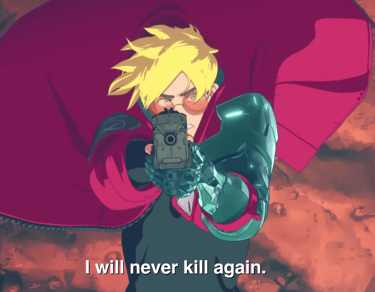

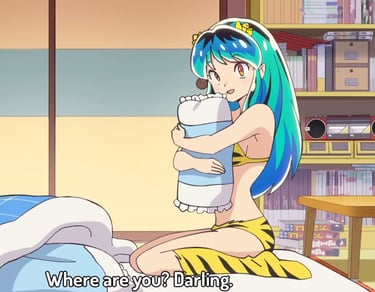


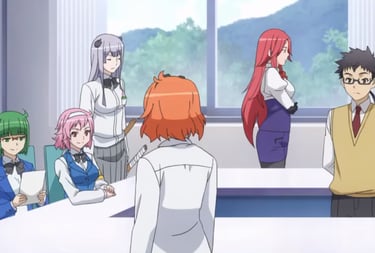
Nothing short of a full reboot is likely to save my poor Tenchi now. The show will have to combine the best of all the previous timelines, include Kiyone Makibi...and finally treat me, Tenchi's true destiny, with more fairness (even favor). Hee hee.


Reboots and remakes are the way, these days. Trigun, Urusei Yatsura...why not Tenchi? And no, the misconceived Ai Tenchi Muyo! doesn't count!

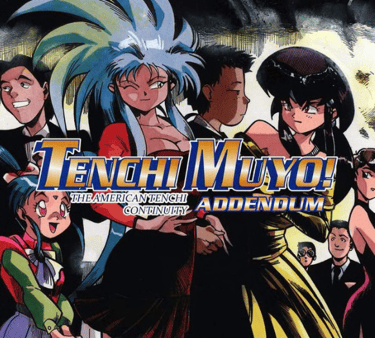


2025 saw an important milestone for the Tenchi comeback cause: a Kickstarter to fund the reprint of the American six-issue Tenchi comic book series. It needed $50,000 but score over triple that amount, proving that a remnant still indeed exists for Tenchi and his angelic ladies.
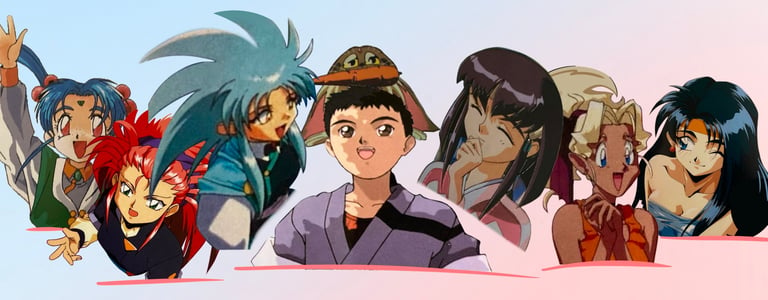

Most important, a Tenchi reboot has to be based on this simple premise: Tenchi can only have one. Or none. And each course bears its consequence.
Why Did Tenchi Fail? The Naysayers Offer a Different Explanation.
Tenchi Muyo was a legend in its time. A paradigm shift for the art form, a seminal blending of humor and drama and space opera and a dozen or so other genres. The series attracted admirers and spawned aficionados in droves. People loved Tenchi, and moreover, they adored the spectacular women that both dominated his household, and more so, the entire show.
And then, despite the fan enthusiasm and fascination, the show just died…meeting a seemingly unjust and inexplicable demise. Within a decade, the sensation had dwindled into a niche curiosity. And by 2010, no one seemed to register that it even existed.
The previous essay tries to explain why Tenchi Muyo, after so much love and fanfare, imploded without much regard or lament. Nary a tear was shed for the show that, just a few years before, had turned boys into men and, more pointedly, had made grounded adults fall for an animated harem. The show enlightened like a religion and, thusly, did more than just generate fans—it converted them into devotees, even fanatics. The show’s eccentric creator, Kajishima Masaki, deserves both the praise and the hate for the show’s titanic rise and fall. In such a paradox, he ignited a revolution only to then see its inexplicable dissolution. And yes, clueless studio execs and the misconceived Tenchi in Tokyo TV show didn’t help matters, either.
But the more critically-minded—the show’s curmudgeons and critics—provide a different explanation for Tenchi’s curious downfall. The property failed not because of misdirection or a lack of vision, they claim, but because it was never that good to begin with.
Overrated and over-celebrated, so they say, the franchise died when viewers finally faced that terrible truth.
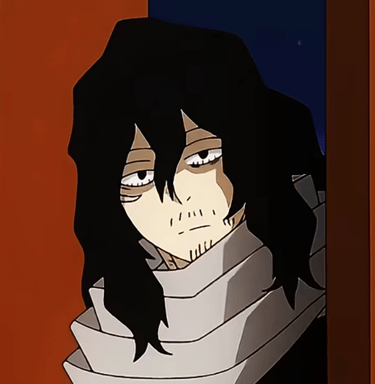

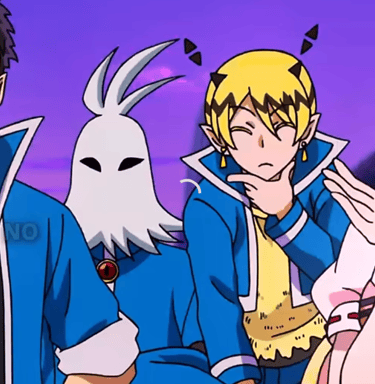

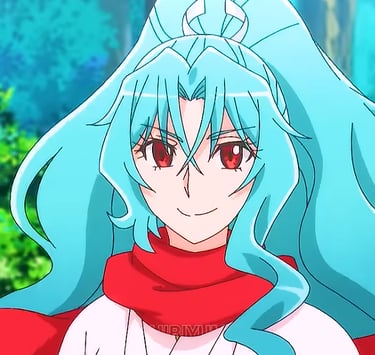

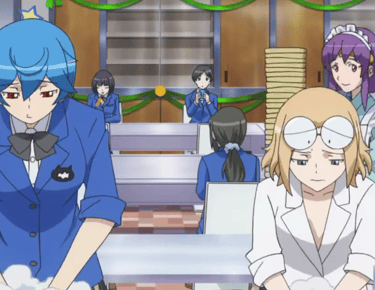

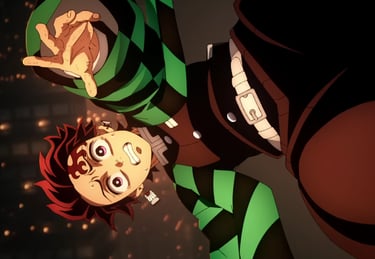




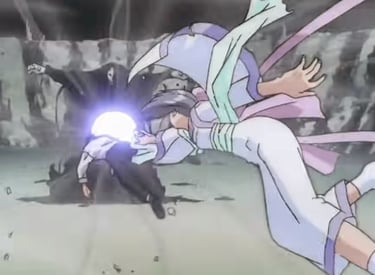

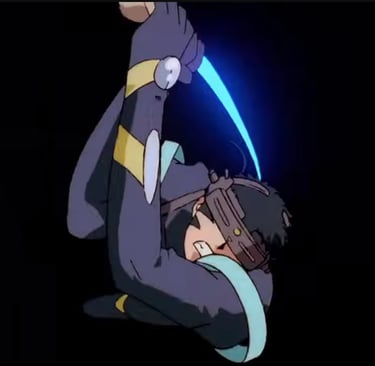


Is Tenchi Muyo too old-fashioned--too slow-paced--by modern standards? Action-packed shows like Demon Slayer (top) and My Hero Academia (next down) definitely make that argument, but to say Tenchi was "boring" is to be disingenuous. It was a slower burn, sure, but that just made the action even more climactic when it came (see below).
The problem, maybe, came from the slower-paced second OVA. Or the first Tenchi TV series (Tenchi Universe) that seems more interested in exploring slapstick slice-of-life dynamics between the cast than growing the tale’s central plot and thesis—that a villainous pretender is trying to usurp the Jurain throne. Anime watchers accustomed to the art form’s current “action now, story later” equation will, inevitably, be rendered baffled, even bored, by Tenchi’s slow burn, dawdling approach.
The question, then, is whether Tenchi Muyo is “flawed” by taking its time developing its characters and focusing more on the jokes. Certainly, viewers didn’t mind the slow-go approach at the time. Are anime critics, years later, so much more enlightened, they can call out the saga’s shortcomings in a way the ‘90s fan simply couldn’t? Or, just maybe, the viewing audiences of today, bred on smartphones fueled by TikTok and YouTube, simply lack the attention span to appreciate what was once a very common style of storytelling. Back then, the epic, the conflict, didn’t always have to come at once.
No doubt, the second OVA could have benefitted by a climacti battle in at least one of its episodes. And Universe, for sure, could have crammed two compelling story arcs within its 26 episodes versus just the one. But when viewed as a collection of character studies mixed with sitcom-style antics, it all makes sense. The world doesn’t need to be saved everyday. Audiences understood Tenchi Muyo was a chill vacation as much as it was a flamboyant carnival.
And master Hitoshi Okuda proves the point repeatedly in his excellent No Need for Tenchi manga. More than anyone else, he understood that delicate balance needed between the characters, their wonky family dynamics, and the surrounding dangers inherent to their station. This was the triangular carousel that made the series both fun and functional, both endearing and enduring. Tenchi resonated most when it served this spicy triumvirate of drama, comedy, and action…and similarly repelled when that triangle flattened.
…
Tenchi Muyo is special. Will always be special. Just because the armchair critics of today can’t detect, or acknowledge, its brilliance doesn’t mean the excellence isn’t there. Thirty years of Isekai and harem and super-powered comedies have surely detracted from Tenchi’s luster, but that only means it’s time to try again. For, if nothing else, Tenchi Muyo still wins with its women. No anime series has since equalled a Ryoko or a Sasami. Has ever quite captured a pair as diametrically missmatched as the Kiyone/Mihoshi dynamic. Has ever provided a princess as complicated but sympathetic as the graceful, but ever floundering, hopeful Ayeka.
Bring these ladies back. Do them justice. Let their designs shine sublime…along with the wonderfully hypnotic, whimsical, haunting music and art that so defined and separated the franchise from its contemporaries then…and copycats now. (Or, the hard-rocking pop that opened Tenchi Universe’s every episode).
Tenchi was never useless. He was just miss-used, his varying timelines ultimately wasted. Rather than tell a stable of strong stories, a stable of preogressively flaky TV shows and OVA sequels filled an ever-clumsier bible instead. The high priests had failed. The faithful eventually left.
And now, thirty years later, only the remnant still remembers. Once upon a time, there was Tenchi.—D
Modern anime has the advantage of computers, drawing tablets, and CGI workstations, but the tradeoff is a lot of generic-seeming, low-detail art. The four shows above all sport a sort of similar, boilerplate aesthetic. They're not identical--their artwork not even bad, exactly--but taken together, they feel somewhat homogenized and cookie-cutter compared to the hand-drawn (pencil on paper) anime art of yesteryear. Modern anime often suffers from a flat, low-def aesthetic...lacking a certain flourish and definition. A style, if you will. Not everything is Demon Slayer.
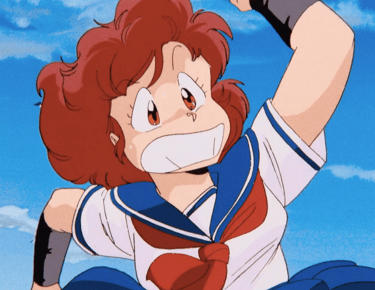

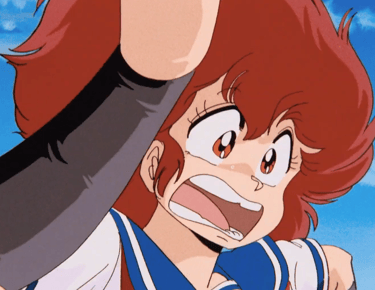

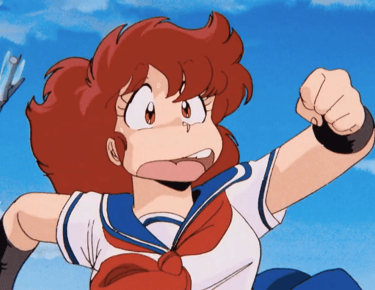



Now take a glance at this scene from 1986's Project A-Ko. Camera angles and movement are more fluid, dynamic, and thus, engaging...as A-Ko totters from rocket to rocket.
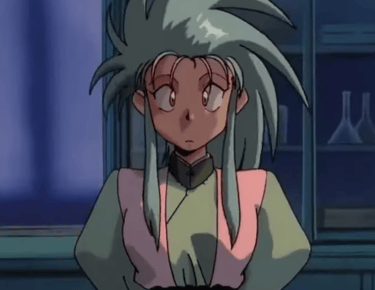


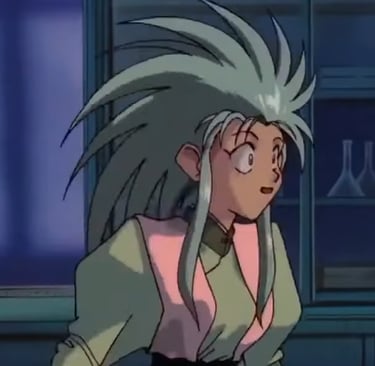

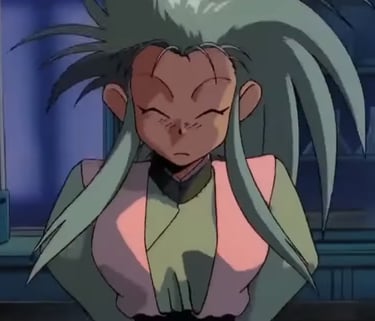


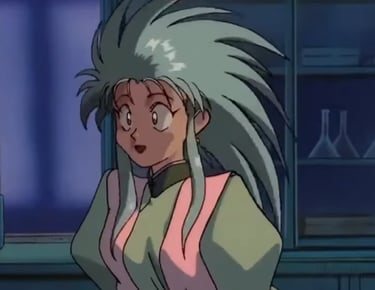


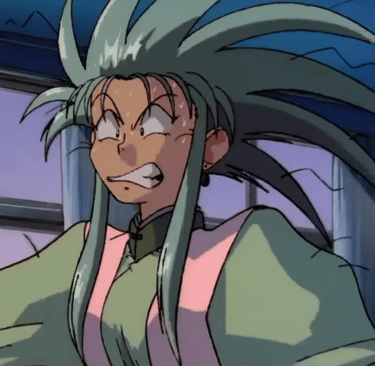
Better yet, let's just use my untidy rival from Tenchi Muyo's first OVA episode. Compared to the art above, Ryoko here has depth, dimension, nuance, and expression. That's animation.
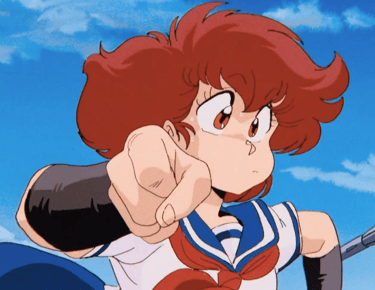


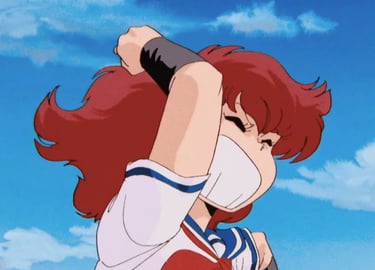
But are these naysayers correct? Could the Tenchi phenomenon have been just a bizarre, wayward fluke?
In short, no…but the truth is more complicated. Judged thirty years later, the old-school, hand-drawn stylings of Tenchi’s earliest escapades do seem a bit flat, even dated, when compared to the flashier pyrotechnics of modern anime. This, of course, is due more to the conveniences of using computers and touchpads with their scads of built-in, canned special effects than a lack of craftmanship by the Tenchi team. Indeed, the extreme talent inherent to using traditional cel for storytelling is lost on most modern audiences; computers grant modern animation a list of canned flourishes that, while seemingly impressive when taken individually, feel generic when set next to dozens of other productions all using the same shortcuts (i.e. software). Tenchi Muyo, especially in Ryo-Ohki, its very first production, is still a stunning piece of handcrafted art.
But, the same naysayers would then counter with Tenchi’s sometimes odd, inexplicable plotting. Nothing happens, they claim. And here, there is some evidence.
Tenchi Muyo! Ryo-Ohki’s original OVA is still a stunning six-episode achievement. Tight storytelling, fast action, unscrupulous infatuation, deep characters, and unfolding mystery all tied by some seminal artistic acumen led to what is still one of history’s greatest animated miniseries. More could not have been done in that constrained, three-hour block.
These scenes are but incidental seconds in their respective works, Project A-ko and Tenchi Muyo. But even in these fleeting moments, the characters show a warmth and depth that far outclasses most modern works. Modern anime, indeed, often has a "canned" look, as if everything is being churned out of the same blender. Computers have made 2-D animation easier, faster, and sometimes, flashier than ever before...but also more "plastic" and derivative. Not every production falls into this trap...not every anime is a stiff, cardboard iteration of a previous, similar show. But old-school, hand-drawn cel art is like someone's fingerprints--the artist, the person, the soul, is in each frame.
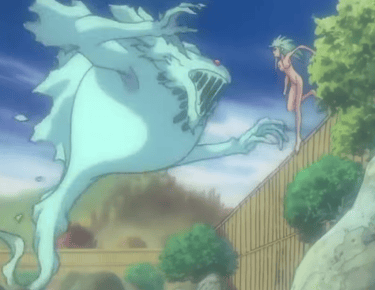



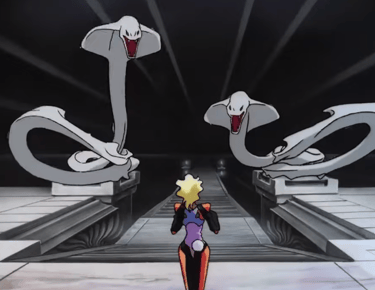



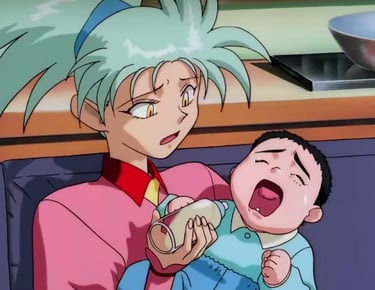



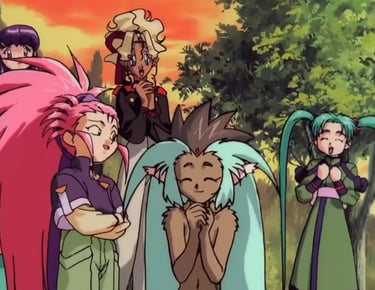



The first OVA interspersed plenty of action with its slower, more heartfelt moments. It was a fine collage of bother, perfectly blended.
OVA 2 inverted the proceedings, emphasizing slice-of-life and character dynamics over thrills and action-packed set pieces...for better or worse.
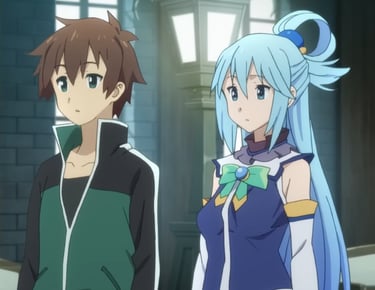

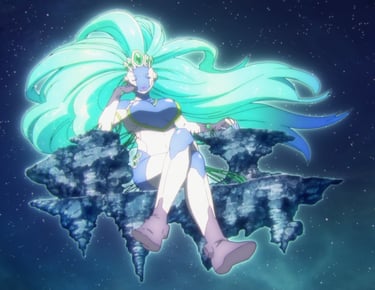

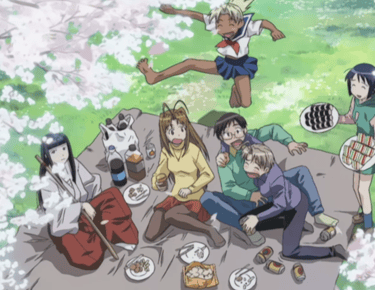



Tenchi Muyo's influential reach spans decades of future anime, but some obvious examples include Love Hina (upper), Edens Zero (middle), and Konosuba! (lower).
Love Hina's characters even borrow from the tropes Tenchi Muyo established, with Shinobu (far right) filling in for the Sasami character, while Su's design (on top) is much like a younger Mihoshi (note the bronzed skin and blonde hair).
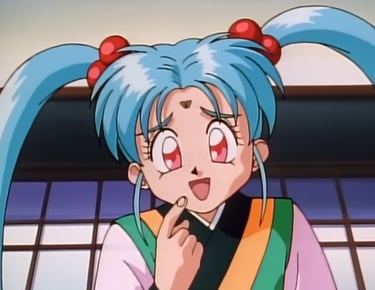

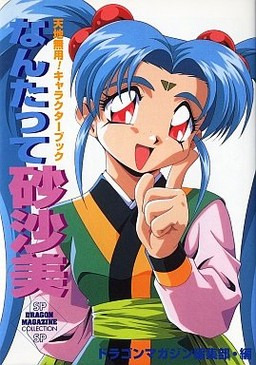

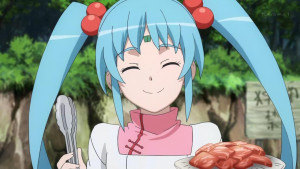






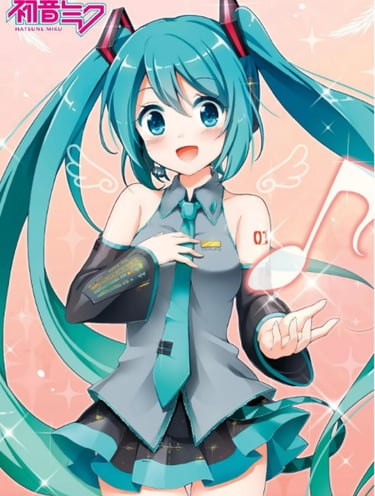





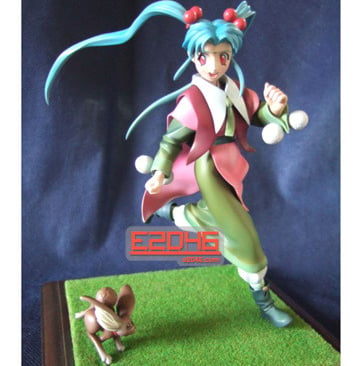
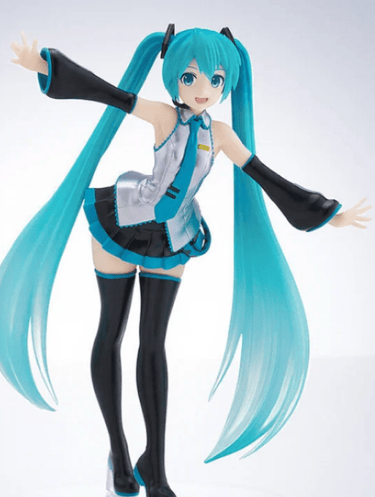



Sasami was hugely popular in the franchise's heyday. So much so, her design lives on in various other completely unrelated properties today.
Addendum: Beyond the Obvious, What Else Could Have Saved Tenchi?
Although this feature has already exhausted the reasons and contributing factors surrounding the Tenchi franchise’s demise, it’s still hard not to look back at the show’s glorious heyday and see the untapped possibilities. Despite the slew of Tenchi media at the time—drama CDs, video games, hit albums, manga, and animated films—Tenchi’s candle still blew out not far into the new millennium. And despite spin-off shows like Tenchi Muyo! GXP and Tenchi Muyo! War on Geminar, soft reboots like the schlocky AI Tenchi Muyo, and naturally, OVA 4 and 5…the series fizzled more than fizzed in the prevailing twenty years.

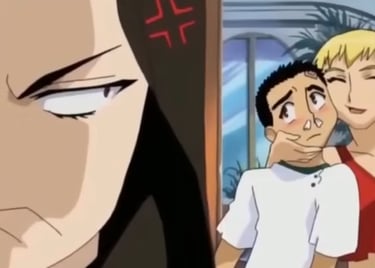



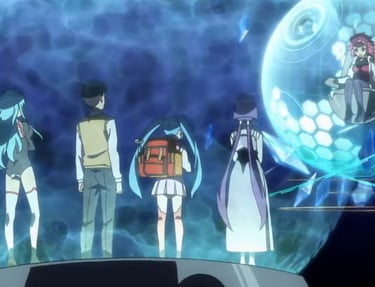
Tenchi Muyo's third OVA underwhelmed for sure, but could have been redeemed--or, at least, the franchise saved--via its succeeding series. GXP, War on Geminar, and Ai Tenchi Muyo (pics posted in said order) all tried to do just that, but a lack of quality, a lack of understanding what made the original series work, or simple audience ambivalence prevented a second phenomenon from catching on.
What more could have been done? Besides the obvious—better scripts for the original Ryo-Ohki series and more seasons of Tenchi Universe—Pioneer/AIC should have capitalized on its characters further. Although Sasami received plenty of off-kilter spin-offs as the magical girl Pretty Sammy, no one apparently thought to create a buddy cop/odd couple show starring Kiyone or Mihoshi. Or a show focusing on Ryoko’s raucous adventures as a space pirate. Even a series or special in which sisters Ayeka and Sasami are teamed up to overcome an incoming danger or evil could have been a joy to see. They’re sisters…why not play off their filial bonds and differences?
As stated previously, Hitoshi Okuda’s No Need for Tenchi manga is another excellent source of storyline goodness. He gets the characters, is fair to each, and is able to weave stories that bounce between epic and domestic with relative ease. Almost any of his plots would have sufficed for a Tenchi Universe continuation, probably fueling the show for seasons to come. Indeed, if a new Tenchi show is ever conceived, the long-since-retired manga would still be an excellent reservoir of ideas from which to cull.
Naoko Hasegawa’s light (hawk?) novels are yet another excellent resource; indeed, the movie Tenchi the Movie 2: The Daughter of Darkness already pulls from one of them. Hasegawa’s books strayed from the mainline continuity by injecting Kiyone Makibi into the gang and introducing a very different set of adventures. Not every story of hers is a masterpiece, but her works still provide another fertile field of ideas from which to grab and explore.
And then there’re the video games. Most Tenchi software leaned heavily in the visual novel/adventure category, using the emerging CD-ROM’s format’s multimedia magic to tell what essentially amount to interactive episodes of the OVA and TV shows. But why stop there? Why not create fighting games featuring the characters? Or a Metroidvania in which players can switch between the cast to attain certain items or reach certain locations? Even a brawler-style game could offer some surreal, action-packed fun.
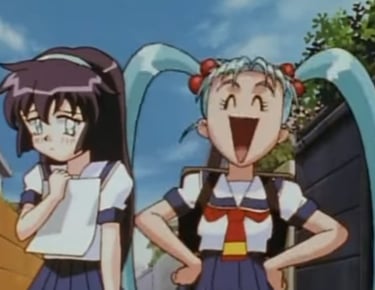

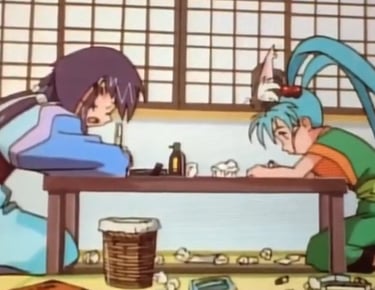

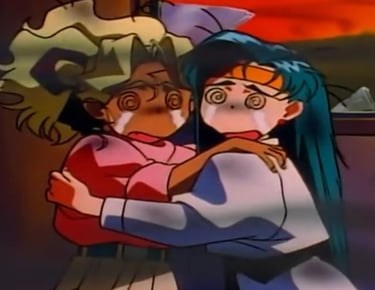



Despite being close sisters, not much is really made of the two's sisterhood or duality, with Ayeka being reserved and the (supposedly) more mature, and Sasami being a perky, cheerful little kid.
A Kiyone/Mihoshi show would have made a lot of sense. With other female police shows like Dirty Pair and You're Under Arrest, why not these two?
A Ryoko solo show, maybe with occasional team-ups with Nagi, also makes a lot of sense.
Sasami got a spinoff series...three, in fact. So why not the others?
But none of this happened. After Tenchi in Tokyo, there was no more Tenchi TV. The third OVA wouldn’t arrive until 2003. And GXP, so different in tone and emphasis, failed to reignite the fanbase when it finally rereleased.
Should Tenchi Muyo ever be resurrected again someday, his show needs to find the balance between action and antics, between slice-of-life and slice-and-dice. Should avoid getting too “weird” with the lore and details (no need for cabbits becoming humanoid and opportunistic goddesses melding with little girls). And, most importantly, a new Tenchi series needs to include the complete cast (Kiyone Makibi and Nagi) while remaining fair to each. Ryoko can’t be favored over Ayeka, for example, and Ayeka needs to win some of the time. Mihoshi can’t be a complete ditz; she needs to still be a contributing member of the team. Sasami, at some point, probably needs to go to school. Washu can’t know everything. Achika needs to be Tenchi’s mother. And regarding Tenchi himself…he needs a distinct personality coupled, perhaps, with a male counterpart/best friend to whom Tenchi can express and explain himself freely. And that friend needs to have his own arc and destiny, too, perhaps as an eventual love interest for one or more of Tenchi’s gals.
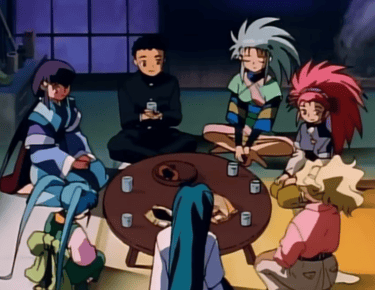

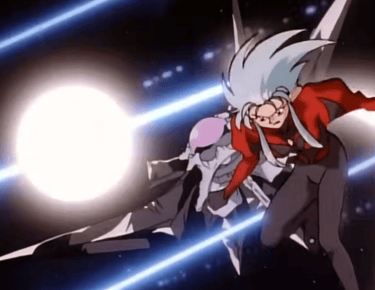

A new Tenchi series will have to find the proper balance between slice-of-life and action-packed space opera.
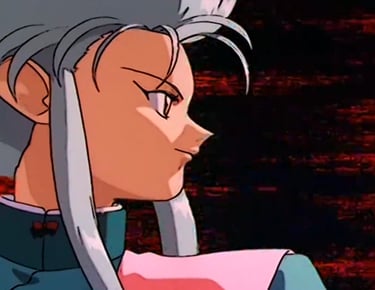

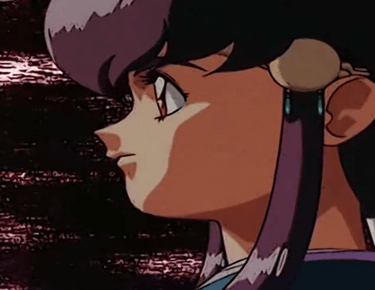

A new Tenchi series can't just be about Ryoko. Every woman needs to shine, maybe even at Ryoko's expense.
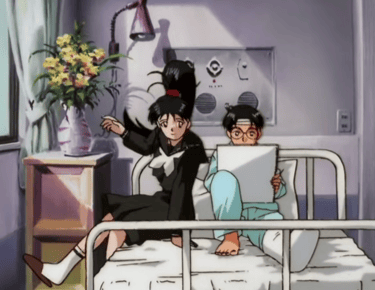


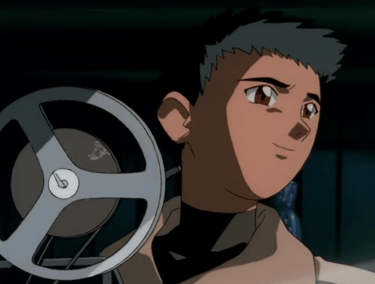
Achika, Tenchi's mother from the Universe continuity, needs to be the version that carries forward in a new series. And Tenchi, for his part, needs to be interesting, distinct...not bland or milquetoast.
And, again, Tenchi can only pick one. No matter what happens, no matter whom Tenchi chooses to be his wife in the end, there can only be one spouse, one partnering. And it can’t automatically be Ryoko. The other girls must all have a compelling chance, especially Ayeka, who should enamor and entice in a way that will even make Ryoko fans turn their heads. If Tenchi’s confused, so should the audience be, too. Each gal comes with gift and a consequence.
Following these principles, avoiding the past’s mistakes, will make Tenchi a revelation for a whole new generation. But that magic can’t happen unless the right visionary, the right disciple, takes command of that lofty gospel.--D
Contact: lostnostalgiaproductions@gmail.com
Website: www.lostnostalgia.com
Like what we're doing? Please consider throwing us a dollar into our Patreon page's tip jar!
